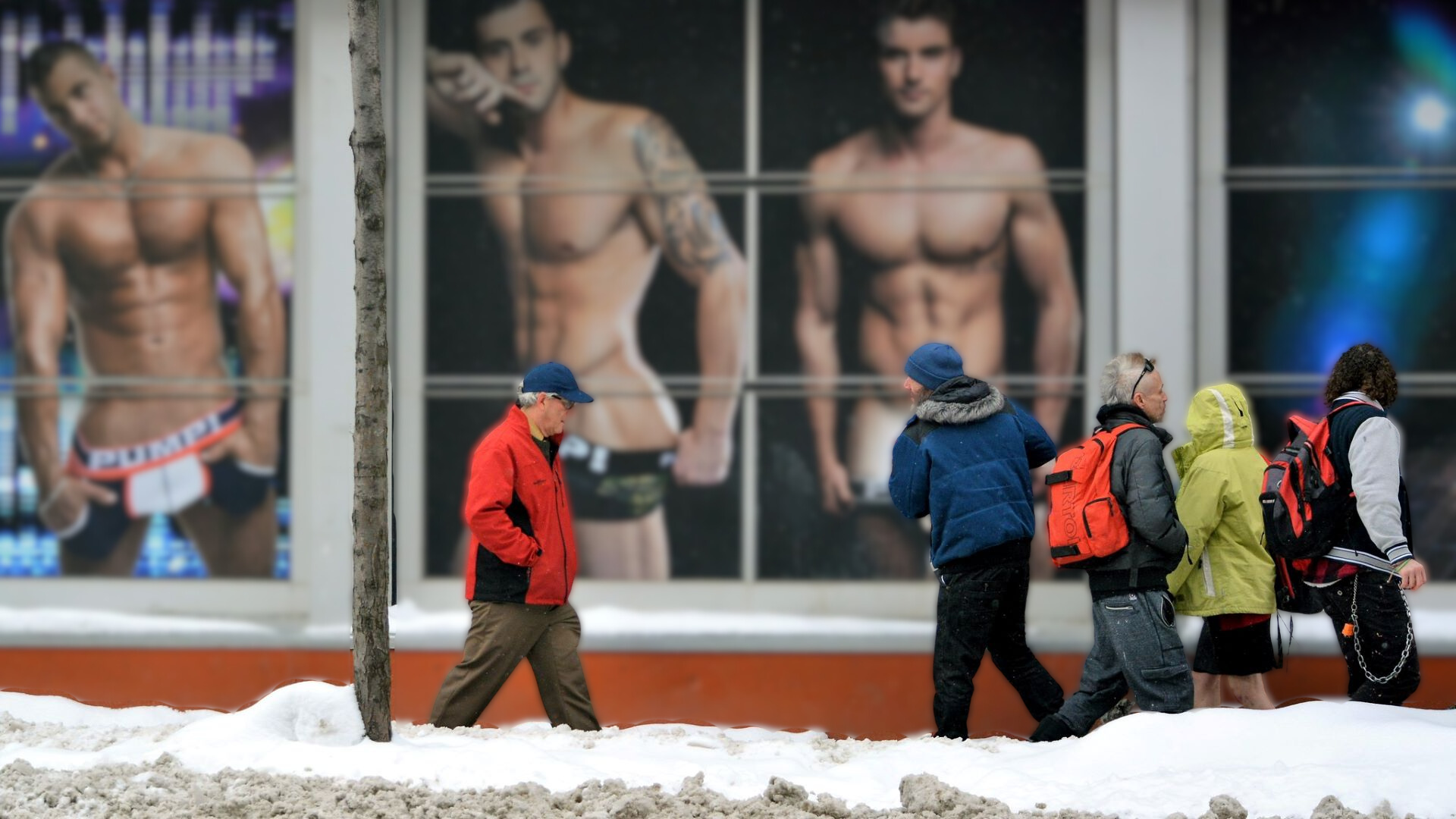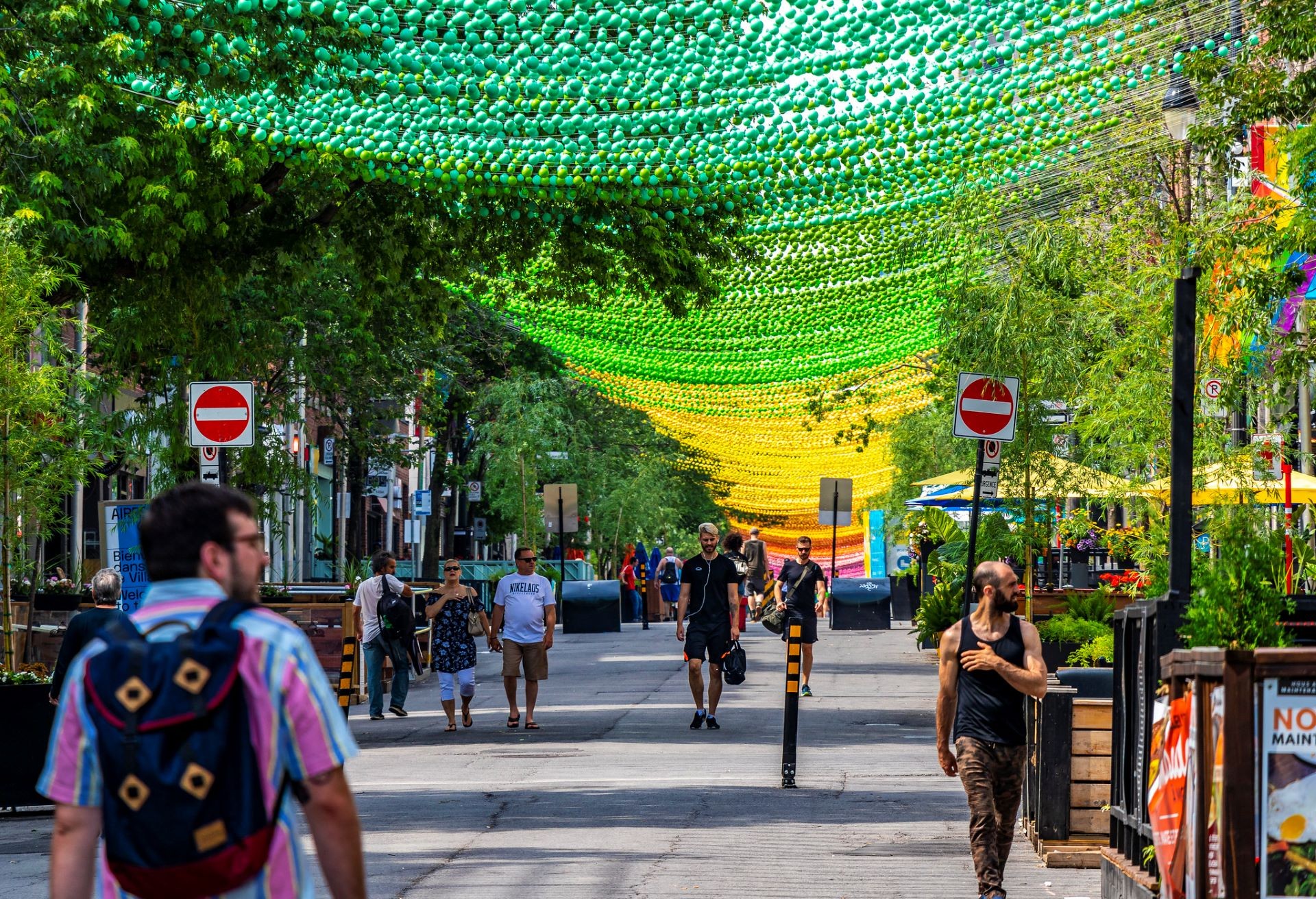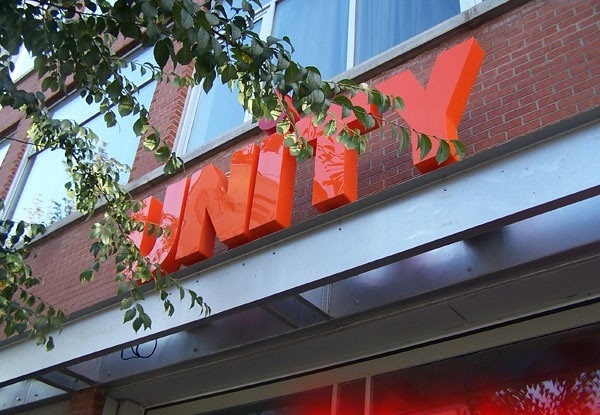Adjacent to it, Club Unity, one of the largest dance clubs in the Village, features the same flag and a fluorescent sign reading “Boys, boys, boys!” visible from the street. These visual and spatial cues matter: they shape who feels welcome and who does not. For queer people of color, trans individuals, and women, this signals that the Village caters to a demographic of cisgender gay men. The complete absence of lesbian bars or women-centred venues further highlights this point. Despite Montreal’s reputation for inclusion, the city has not had a single lesbian bar in its Village for years.
These dynamics reveal how planning and zoning decisions, while seemingly neutral, can reproduce inequality. The prioritization of nightlife and consumption-oriented businesses over community-oriented spaces reinforces the Village’s identity as a commercial zone rather than a site of solidarity. When urban design caters to consumption, inclusivity becomes aesthetic rather than structural.



 Photo from Carl Campbell, via Flickr: https://www.flickr.com/photos/c-b-campbell/
Photo from Carl Campbell, via Flickr: https://www.flickr.com/photos/c-b-campbell/
 Photo from Brandon Bartoszek, via Flickr: https://www.flickr.com/photos/eridony/
Photo from Brandon Bartoszek, via Flickr: https://www.flickr.com/photos/eridony/
 Photo from MontrealIsGay.com, via Flickr
Photo from MontrealIsGay.com, via Flickr
